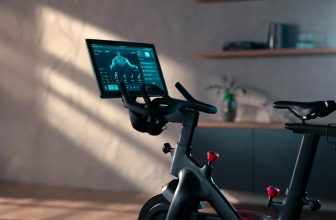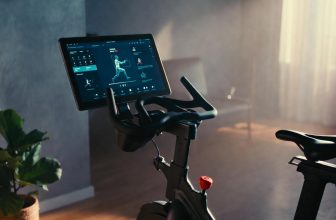Table of Contents
- Can Treadmill Help Build Muscle?
- Understanding Muscle Building on a Treadmill
- Types of Treadmill Workouts for Muscle Growth
- Incline Walking or Running
- Sprint Intervals
- Weighted Treadmill Workouts
- Treadmill vs. Traditional Strength Training
- Benefits of Treadmill Workouts for Muscle Building
- Limitations of Treadmill Muscle Building
- Tips to Maximize Muscle Building on a Treadmill
- FAQs
- Can a treadmill replace weightlifting for muscle building?
- How often should I use a treadmill to build muscle?
- Does treadmill running build more muscle than walking?
- Can beginners build muscle on a treadmill?
- Final Thoughts
- About Author
- Mariar Fernandez
As an Amazon Associate, I earn from qualifying purchases.
Can Treadmill Help Build Muscle?
Can Treadmill Help Build Muscle? Yes, a treadmill can help build muscle, particularly in the lower body, through targeted workouts like incline walking, sprinting, or resistance-based routines. However, it’s most effective when combined with strength training for optimal muscle growth.
Understanding Muscle Building on a Treadmill
Treadmill workouts primarily enhance cardiovascular fitness but can also stimulate muscle growth through specific exercises. Muscle hypertrophy occurs when muscle fibers undergo stress, triggering repair and growth. While treadmills are not traditional strength-training tools, they engage lower-body muscles like the quadriceps, hamstrings, glutes, and calves through dynamic movements.
- Key Muscle Groups: Running or walking on a treadmill activates the quadriceps, hamstrings, glutes, and calves, with core muscles stabilizing the body.
- Resistance Factor: Incline settings and sprint intervals increase resistance, promoting muscle stress similar to light strength training.
According to a 2019 study in the Journal of Strength and Conditioning Research, incline treadmill walking at 10-15% grade significantly increases glute and hamstring activation compared to flat walking.
Types of Treadmill Workouts for Muscle Growth
Treadmill workouts can be tailored to target muscle development by adjusting speed, incline, and duration. Below are effective methods:
Incline Walking or Running
Incline workouts mimic uphill climbing, increasing muscle engagement. A 2021 study from the European Journal of Applied Physiology found that walking at a 10% incline boosts glute activation by up to 40% compared to level walking.
- How to Do It:
- Set the treadmill to a 5-15% incline.
- Maintain a steady pace (3-4 mph for walking, 6-8 mph for running).
- Perform 20-30 minutes, 3-4 times per week.
Sprint Intervals
High-intensity interval training (HIIT) on a treadmill promotes muscle growth by inducing fast-twitch muscle fiber activation. A 2020 study in Sports Medicine reported that HIIT sprinting enhances lower-body muscle strength by 10-15% over 8 weeks.
- Sample HIIT Protocol:
- Warm up for 5 minutes at 3-4 mph.
- Sprint at 80-90% max speed for 30 seconds.
- Recover at a slow walk (2-3 mph) for 60 seconds.
- Repeat for 8-10 cycles.
Weighted Treadmill Workouts
Adding resistance, such as a weighted vest, increases muscle demand. A 2018 study in Medicine & Science in Sports & Exercise showed that weighted walking improves muscle endurance and strength by 12% over 12 weeks.
- Tips:
- Use a vest weighing 5-10% of body weight.
- Start with shorter sessions (15-20 minutes) to avoid strain.
For more on HIIT benefits, visit Harvard Health’s guide to interval training.
Treadmill vs. Traditional Strength Training
While treadmills support muscle development, they are less effective than resistance training for hypertrophy. Weightlifting targets specific muscles with progressive overload, a key driver of muscle growth. Treadmill workouts, however, excel in endurance and functional strength.
| Aspect | Treadmill Workouts | Traditional Strength Training |
|---|---|---|
| Primary Focus | Cardiovascular fitness, muscle endurance | Muscle hypertrophy, strength |
| Muscle Activation | Lower body, core stabilization | Full body, targeted muscle groups |
| Equipment Needed | Treadmill | Weights, machines, or bodyweight |
| Time Efficiency | High (combines cardio and muscle work) | Moderate (requires separate cardio) |
A 2022 meta-analysis in Frontiers in Physiology noted that combining treadmill workouts with strength training yields 20-30% greater muscle growth than cardio alone.
Benefits of Treadmill Workouts for Muscle Building
Treadmill exercises offer unique advantages for muscle development:
- Low Impact Option: Walking reduces joint stress compared to running, ideal for beginners or those with joint issues.
- Versatility: Adjustable speed and incline allow customization for muscle-focused goals.
- Calorie Burn: A 30-minute incline walk at 3.5 mph burns approximately 200-300 calories, supporting fat loss to enhance muscle definition (American Council on Exercise).
- Accessibility: Treadmills are widely available in gyms or homes, making consistent workouts feasible.
Learn more about calorie burn and exercise at American Council on Exercise.
Limitations of Treadmill Muscle Building
Treadmills have limitations for muscle growth:
- Limited Muscle Targeting: Primarily engages lower-body muscles, neglecting upper body.
- Plateau Effect: Without progressive overload (e.g., increasing incline or weight), muscle growth stalls.
- Not a Strength Replacement: For significant hypertrophy, weights or resistance bands are more effective.
A 2023 study in Journal of Sports Sciences found that treadmill-only routines result in 50% less muscle gain compared to combined cardio and strength programs.
Tips to Maximize Muscle Building on a Treadmill
To optimize treadmill workouts for muscle growth:
- Incorporate Incline: Use 5-15% incline to increase muscle activation.
- Vary Intensity: Combine steady-state cardio with HIIT to target different muscle fibers.
- Add Resistance: Use weighted vests or ankle weights for added challenge.
- Combine with Strength Training: Pair treadmill sessions with weightlifting 2-3 times per week.
- Track Progress: Monitor speed, incline, and duration to ensure progressive overload.
For strength training tips, check Mayo Clinic’s strength training guide.
FAQs
Can a treadmill replace weightlifting for muscle building?
No, treadmills cannot fully replace weightlifting. They enhance lower-body muscle endurance and strength but lack the targeted overload needed for significant hypertrophy.
How often should I use a treadmill to build muscle?
Aim for 3-4 sessions per week, 20-30 minutes each, using incline or HIIT protocols for optimal muscle engagement.
Does treadmill running build more muscle than walking?
Running, especially sprinting, activates fast-twitch muscle fibers, promoting more muscle growth than walking. However, incline walking is effective for endurance and glute activation.
Can beginners build muscle on a treadmill?
Yes, beginners can build muscle with incline walking or light jogging, gradually increasing intensity to avoid injury.
Final Thoughts
Treadmill workouts can contribute to muscle building, particularly in the lower body, through incline walking, sprint intervals, and weighted routines. While not a substitute for traditional strength training, they offer a versatile, low-impact way to enhance muscle endurance and definition. Combining treadmill sessions with resistance training maximizes results, supported by studies showing 20-30% greater muscle growth with hybrid programs. By strategically using incline, intensity, and resistance, you can make the treadmill a valuable tool in your muscle-building journey.







